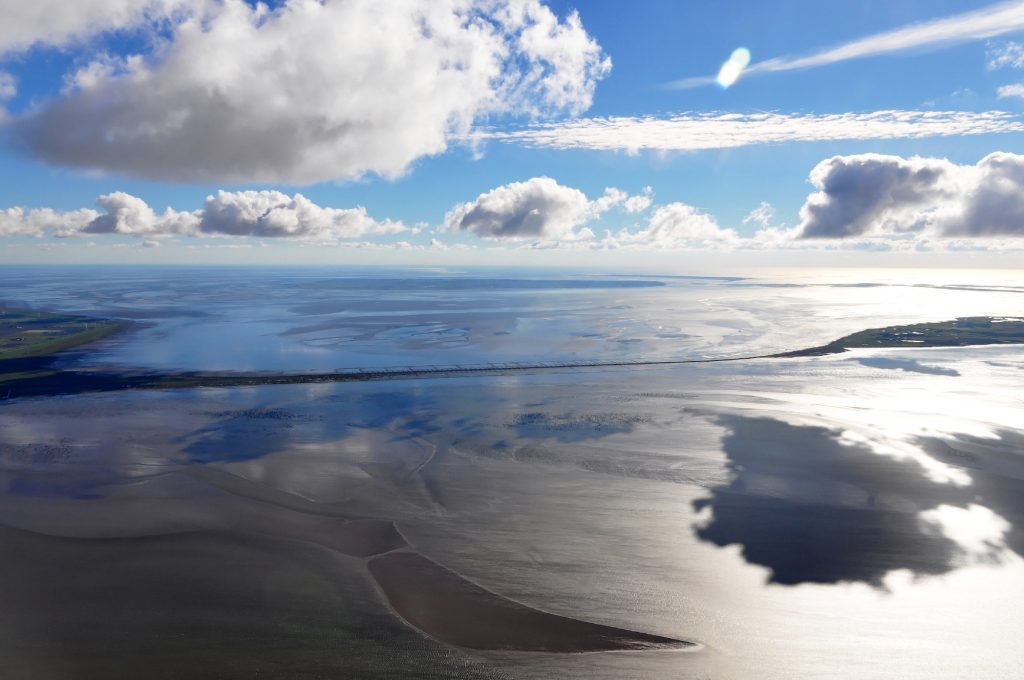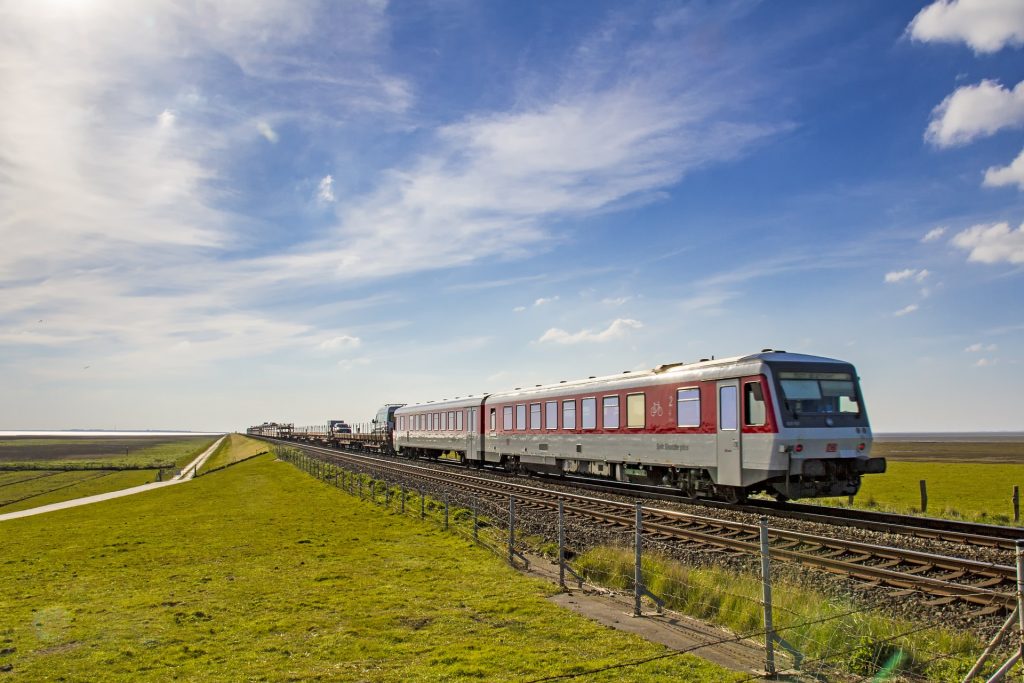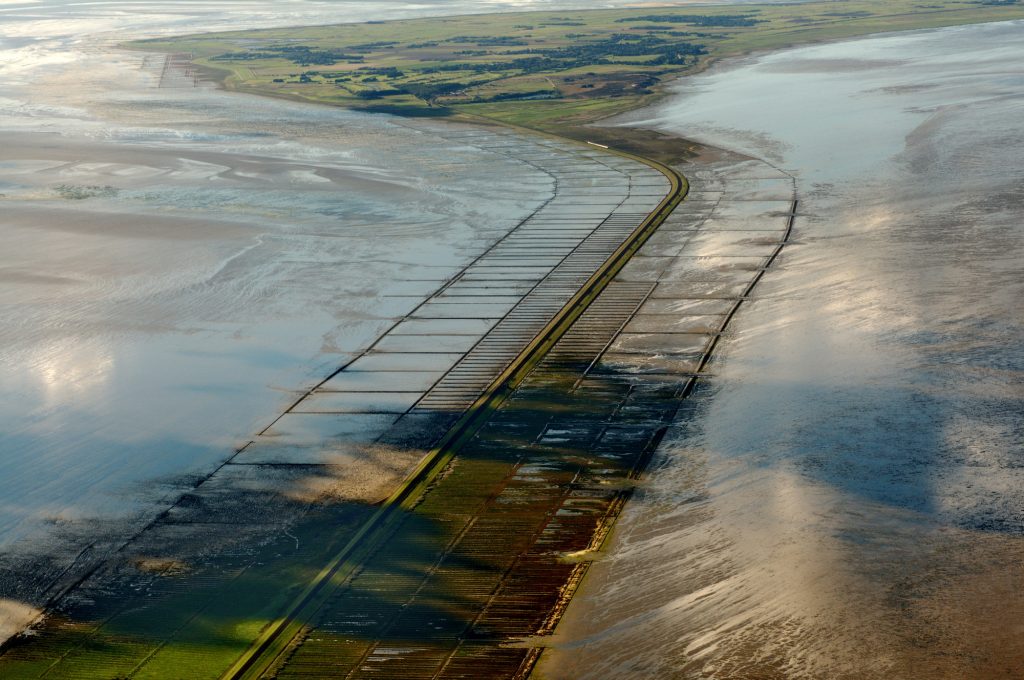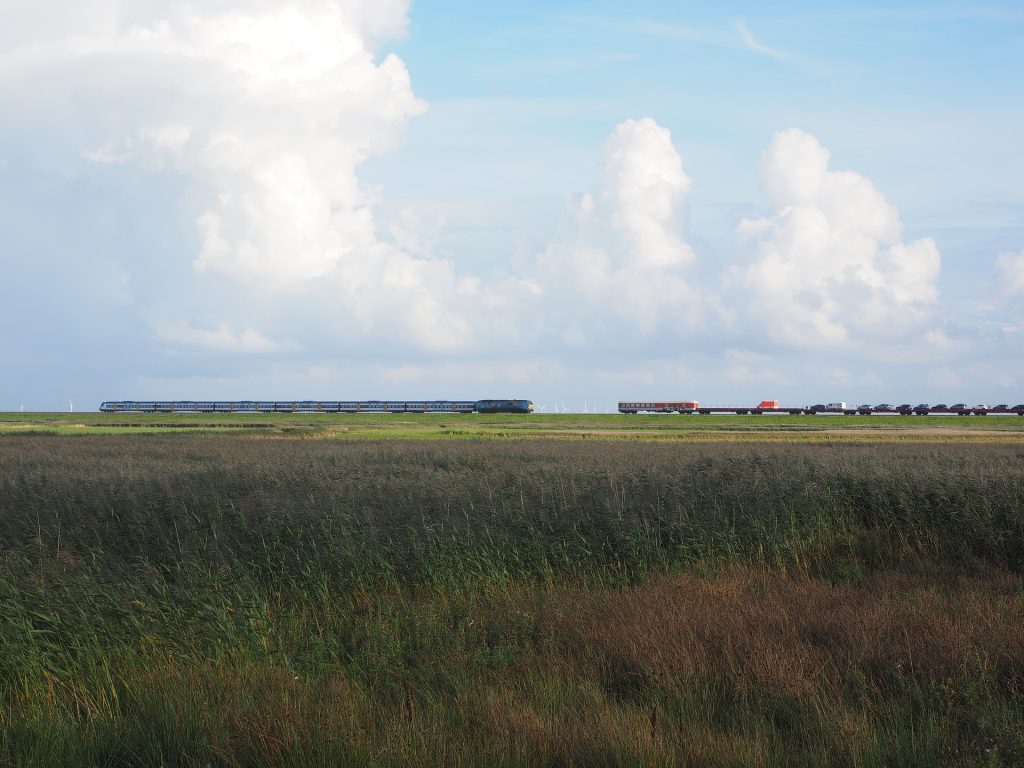Journeying to Germany’s northernmost point
As a student, I would often find myself waiting on the platform at Essen railway station, on my way to university, weighing up whether or not to throw caution to the wind and jump on the train to Westerland/Sylt instead. Whenever I saw the train, the lyrics to the famous German song “Westerland” by Berlin punk band Die Ärzte – a somewhat sarcastic homage to this most touristic and middle-class of German seaside resorts – would run through my head. “Oh I have such a yearning, That I think I’m going insane,” it goes. Sod university, I’d think. “Take me back to the North Sea…” Alas, I never did jump on the train. I was a student after all and I couldn’t afford a holiday anywhere, let alone to the wealthy island of Sylt, where Westerland is located.
From way out west to way up north
Years later, though, I felt the time had finally come. On a mild December morning, my husband and I climb into the Intercity at Essen, which six and a half hours later spits us out on Germany’s favourite island, Sylt – and yes, you read that right: on an island. The train crosses the sea. Or rather, it crosses the Hindenburgdamm causeway. And while I admit I don’t travel often to experience nature, I’m excited about the crossing and to see the island and am looking forward to a few days away from our busy city lives.
More than enough room for my 6 ft 5 husband
We like to take things easy, my husband and I. Comfort and pleasure are of utmost importance. And honestly, what mode of transport is as comfortable as the train when your partner towers over you at 6’5″? I hear no complaints about too little legroom, no grumbling about seats that are too small… Let the holiday begin!
Taking the train straight to the beach (almost)
So I sit back and read my book, checking from time to time whether the landscape is any flatter, a topographical feature northern Germany is famous for. This starts to happen after Hamburg – which, it occurs to me from the train, a better planned or simply more spontaneous holidaymaker could easily combine with a trip to Sylt. The further north we travel, the more Nordic the names of the stations start to sound – Itzehoe, Husum, Niebüll – the flatter the country becomes and the closer the sea. It’s really pretty, and that’s coming from me, a proud urbanite. I look out of the window so as not to miss the moment you can see water on both sides of the train.
Five miles of railway straight through the Wadden Sea
In 1856 one of Sylt’s most celebrated residents, Christian Peter Hansen, first proposed the benefits of connecting the Frisian island with the mainland. But it was only in 1927, after four years of hard work, that the causeway was finally opened by then-President Paul von Hindenburg. Contrary to popular belief, he did not lend his name to the Hindenburgdamm; rather, it was a Westerland councilman who came up with the name and it stuck. Today, it allows thousands of tourists, as well as car and freight trains, to cross over to Sylt all year round.
Bikes and buses: the leisurely and sustainable way to discover Sylt
We decide against taking our car as we want to explore the island on foot and by bus from our lodgings in the village of Keitum. In the end we opt for bicycles, my only condition being that we use e-bikes. The breeze in Sylt is typically Nordic: stiff! And so we cycle against the wind past beautiful sand dunes and through idyllic villages with thatched roofs. Were it not for my bike’s motorised support, I’m almost certain I couldn’t have managed it all. With aching muscles but delighted to have made it to Germany’s northernmost tip, we seek refuge in a cosy pub with fabulous Sylt specialities, where we can still hear the crashing of the waves and feel the power of the North Sea.

Copyright Lead Foto, aerial view Hindenburgdamm: Ralf Roletschek




